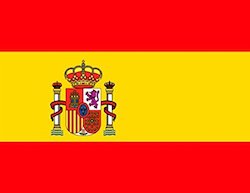8 simple steps to build a great social media strategy
Anouk Jodry, 2017/10/19
Learn how to launch your accounts on Facebook, Instagram, Twitter, Pinterest, ... and to build a strong social media strategy around them!

The community manager’s toolbox!
(Infography)
Small start-up structures often need support to gain visibility online through social media. But it is not easy to start to build from scratch its social media strategy, especially when you have no idea how to communicate and manage a professional account on the internet. SubForce selected 8 simple steps to help the aspiring community manager to serenely jump in at the deep end.
-
Identify my goal
-
Identify my audience
-
Which social media choosing?
-
What kind of content?
-
What are my competitors posting?
-
Create my own blog
-
Schedule my posts
-
Analyse and improve my strategy

1. Set my goal
It is important to have perspective of the online actions of my business: why do I want to have a social media presence? Which goal do I want to reach with those accounts?
A key element is to set S.M.A.R.T goals, that is to say goals that are Specific, Measurable, Achievable, Realistic and Temporal.
For instance, I have an ecommerce website of healthy cookbooks. What do I expect from my social accounts ?
My goal is to make me known, and to attract more traffic on my website. Also I’d like to sell 150 books per week (instead of 120 today).

2. Identify my audience
I have to define clearly who I an going to address to: which audience is concerned about my product or service? Let put myself in my client's shoes, and think about his psychology: what, how, when, how often, and why does he buy, what are his interests, where does they come from, etc…These keys will help me define what type of speech and content my target audience is receptive to.
Who is my target?
Men and women between 25 and 55 years old, who are keen on cooking, and also sensitive to the topics of good-eating.

3. Which social media choosing?
I then define the platforms I will use, according to my objectives and my target! On what social networks is my audience present?
General |
Images |
Videos |
Business |
SEO |
Places |
Twitter, Facebook |
Pinterest, Instagram, Tumblr,… |
Vine, Vimeo, Youtube,… |
Linkedin, Viadeo,… |
Google+, Scoop-it,… |
Tripadvisor, Foursquare, Yelp,… |
So in my case, where do I publish?
I prefer platforms that promote media content (images and videos) and that engage my online community. My target is on networks like Instagram, Facebook, Youtube and Twitter.

4. What kind of content?
I adjust the content of my posts depending on my business and my objectives, depending on the expectations of my audience, and depending on the social network used.
This step is about defining the bases of my content: what are the themes I have been thinking about? I pick out four or five subjects in which I feel comfortable writing, and in which my audience will identify with. The variety of subjects is important, so as to maintain the attention!
I can also brainstorm: it may be interesting to combine relevant keywords, and even to build a blog with value-added content. (see step 6)
So in the case of my eboutique, I’d like to publish this kind of content:
- Talk about my products (images of the dishes of a book, preface of a book, particular theme ...)
- Post videos (step-by-step recipes, ...)
- Feed my online community with quality content: Interview with nutritionists to give more weight to my recipes and position myself as an expert in nutrition (a format that engages my subscribers, with questions answers)
- Feed the Blog with articles (Highlighting one ingredient per week and offering recipes around this ingredient, Top recipes)
- Also offer a broader content, with for example posts about lifestyle, in order to vary the posts and attract a wider audience

5. What are my competitors posting?
I have to remain alert to the types of publication my competitors are posting (competition of brand, product, need and generic competition), for instance setting google alerts, and define the type of posts that engages most my audience. It is an effective driver to see if the content I defined in the step before is consistent.
A good idea can be following the influencers in my area, and build my relationships gradually with them. Networking is always a good idea to build a strong and committed online community!

6. Create my own blog
If I want to generate my own content on my social media accounts, creating a blog is the perfect solution. It allows me to be recognized as an expert in my field, and it an excellent tool for the positioning of my website! The more constant I am in the redaction of my blog content, the more chances I get to see results of my social media strategy.

7. Schedule my posts
Once all these stages have been validated, it is relevant to create an editorial calendar, that is to say a calendar of my future publications. I must plan the date, the subject, the content, the target audience, the author, and the social media on which to post.
Do not forget to allow space for spontaneity: certain medias such as instagram allow to make videos in live for example, an interesting format for certain areas such as events or to respond to a particular news, etc ...

8. Analyse and improve my strategy
My strategy is now broadly defined, but far from perfect! Once implemented, it is now time to analyse the given results: I can use many measurement tools to measure in a quantitative and qualitative way to measure the impact of my strategy, the type of content that worked well or not, and why.








Comments
Let us a comment